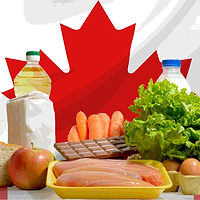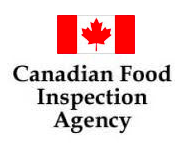In my work, I have the good fortune to meet and talk to people from around the world with a deep-seated interest in the food sector.
When I ask them what are the big issues they’re seeing in food production and safety, they never fail to provide fascinating insight that adds to the global picture we’re piecing together at the Canadian Food Inspection Agency (CFIA) as we chart our course forward.
What does that global picture look like? We see a food sector that is innovative, highly competitive, and becoming more international in scope all the time. We also see that the speed, volume, and complexity of food production have produced new risks and challenges—including new threats to food safety, plant and animal health, changing consumer preferences, and international standards that are focused on prevention.
As these risks and challenges continue to evolve rapidly, the CFIA is becoming more agile to continue protecting Canada’s food safety system while also supporting industry’s ability to compete globally. Under our framework Responding to Today, Building for the Future, we are on a course of continuous improvement to modernize every strategic area of our organization, from regulations and risk management to inspections, digital tools, and global leadership.
A Strong System…Made Stronger
Canada is widely regarded as having one of the strongest food safety systems in the world. In the face of change, we are taking steps to further strengthen it. And it all begins with having a single set of modern regulations to govern food safety.
In June 2018, the Government of Canada finalized the Safe Food for Canadians Regulations (SFCR) which will replace 14 sets of regulations with one. The SFCR are several years in the making and the result of careful, informed policy development supported by extensive consultations with food businesses, food experts, everyday Canadians, and our trading partners abroad.
The public consultations on the SFCR underline the Government of Canada’s commitment to make our country’s regulatory system more agile, transparent and responsive. This open approach to regulatory development serves as the foundation for public trust both in Canada and beyond our borders.
The new consolidated act and regulations, which come into force on January 15, 2019, will protect Canadian families by making the food system even safer by focusing on prevention and allowing for faster removal of unsafe food from the marketplace. They will also position Canadian food businesses to act on new opportunities, be more competitive, and grow new markets.
Some requirements of the SFCR will have to be met immediately upon coming into force on January 15, 2019, whereas other requirements will be phased in over a period of 12 to 30 months based on food commodity, type of activity, and business size.
Supporting Innovation and Competitiveness
The SFCR will include outcome-based regulations, which specify the result that regulated parties must meet without prescribing the way it should be achieved. This will enable industry to innovate and respond to new challenges and developments in a competitive global marketplace while strengthening high food safety standards.
They will also allow for current regulatory requirements, such as grades and compositional standards, to be incorporated by reference where appropriate, making the regulatory system responsive—for example, making changes to grades and standards will be faster to implement when there is consensus that the changes will facilitate trade. With access to new technologies that are proven to be effective in controlling hazards, industry will have the ability to innovate and compete globally.
Every day, thousands of metric tons of food and beverages arrive in Canada by sea, land, and air.
In just 10 years from 2006 to 2015, the value of fresh fruits, vegetables, and processed foods being imported annually into Canada nearly doubled to $22.8 billion.
Consistent Standards for Food, including Imported Products
The SFCR are based on international food safety standards and align with the regulations of our key trading partners.
The new consolidated regulations will require businesses that import food into Canada or prepare food in Canada for export or to be sent across provincial or territorial borders to have licenses, as well as preventive controls that address potential risks to food safety. They will also be required to maintain traceability records, which will result in more efficient and effective recalls and investigations, and potentially minimize economic losses for affected businesses.
Imported food will be required to be prepared with the same level of food safety controls as food prepared in Canada. Canadian food importers will need to identify in their preventive control plans all potential risks to food safety, and explain how their international suppliers will be taking steps to control those risks. Importers will have to:
• Understand the supply chain for the product they are importing
• Understand how their foreign supplier is addressing all hazards associated with the food
• Know if the food will need further processing or labelling after it arrives in Canada, so it will meet Canadian requirements
• Demonstrate that the food is manufactured, prepared, stored, packaged, and labeled under conditions that provide at least the same level of protection as provided by the SFCR.
A Good News Story across the Board
The new requirements will ensure consistency with global approaches to food safety and boost the competitiveness of Canadian food businesses across the supply chain—from farm to retail, at home, and on the world stage. From reducing food safety risks to spurring innovation, the SFCR are a good news story in every way, for Canadian families, food businesses, and people outside Canada.
Food safety is a global business, an evolving business. We all have a role to play in it. With the SFCR, Canada is taking action to advance food safety and continue building on our global leadership in this critical sector as we respond to today and build for the future.
Learn More about the SFCR
The CFIA has tools and plain-language resources available to help businesses understand and prepare to meet the requirements of the SFCR—including multilingual fact sheets and guides to developing a preventive control plan with helpful templates and information on how and what to consider to be prepared for a smooth enrolment. Businesses can also use the CFIA’s guidance finder to search for the latest SFCR technical and regulatory information. For more information, please visit www.inspection.gc.ca/safefood.
 Paul Glover, M.B.A., is the president of the Canadian Food Inspection Agency. Mr. Glover also serves as the Deputy Champion for Brock University. Prior to his appointment as Associate Deputy Minister of Health Canada, Mr. Glover was Assistant Deputy Minister of the Health Products and Food Branch.
Paul Glover, M.B.A., is the president of the Canadian Food Inspection Agency. Mr. Glover also serves as the Deputy Champion for Brock University. Prior to his appointment as Associate Deputy Minister of Health Canada, Mr. Glover was Assistant Deputy Minister of the Health Products and Food Branch.
The Safe Food for Canadians Regulations: Advancing Food Safety




